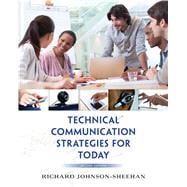ALERT: Before you purchase, check with your instructor or review your course syllabus to ensure that you select the correct ISBN. Several versions of Pearson's MyLab & Mastering products exist for each title, including customized versions for individual schools, and registrations are not transferable. In addition, you may need a CourseID, provided by your instructor, to register for and use Pearson's MyLab & Mastering products.
Packages
Access codes for Pearson's MyLab & Mastering products may not be included when purchasing or renting from companies other than Pearson; check with the seller before completing your purchase.
Used or rental books
If you rent or purchase a used book with an access code, the access code may have been redeemed previously and you may have to purchase a new access code.
Access codes
Access codes that are purchased from sellers other than Pearson carry a higher risk of being either the wrong ISBN or a previously redeemed code. Check with the seller prior to purchase.
For courses in Introduction to Technical Communication or Technical Writing offered in English Departments.
Technical Communication Strategies for Today offers students all of the topics and genres they need for their technical communication course—in fewer pages and at a significantly lower price.
Students want their textbooks to cost less, and they want comprehensive topical coverage presented in a succinct and clear writing style. Technical Communication Strategies for Today offers both and speaks to today's students. Instructional narrative is “chunked,” so that portions of text are combined with graphics. The chunked presentation also integrates an awareness of how documents are read—often skimmed by readers seeking the information they need, and it models the way today’s technical documents should be designed.
The contemporary writing style is matched by an approach that accurately reflects the modern day computer-centered technical workplace:Technical Communication Strategies for Today presents computers as thinking tools that powerfully influence how we develop, produce, design, and deliver technical documents and presentations.








